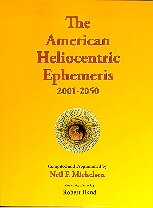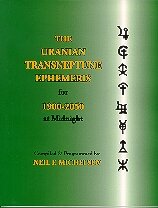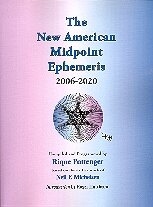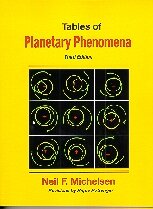
|
The Astrology Center of America, 207 Victory Lane, Bel Air, MD 21014 Tel: 410-638-7761; Toll-free (orders only): 800-475-2272 |
|||||||
|---|---|---|---|---|---|---|---|
| Home | Author Index | Title Index | Subject Index | Vedic Books | Tarot | E-Mail: | |
 |
Specialized Ephemerides |
On this page, Western Sidereal epemerides (ie, Fagan-Bradley ayanamsa), Heliocentric, Midpoint, and the celebrated Tables of Planetary Phenomena. These had previously been published by Neil Michelsen's Astro Computing (later, Astro Communications) of San Diego. With one exception, they are now published by Starcrafts Publishing, of Exeter, NH. This is the creation of Michelsen's wife and heir, Maria Kay Simms, after the demise of ACS. I wish her much success.
For each of the ephemerides, there are sample pdf files. They were scanned at 100% size, 600 dpi. With a cable modem they load rather fast. PDF files can be enlarged, to see all the details.
For standard ephemerides, see Ephemerides
For Asteroid ephemerides, see Asteroids
For Tables of Houses, see Tables of Houses, Calculation Aids, etc.

|
||

|
||

|
||

|
||

|
||
 |
||
For standard ephemerides, see Ephemerides
For Asteroid ephemerides, see Asteroids
For Tables of Houses, see Tables of Houses, Calculation Aids, etc.

207 Victory Lane, Bel Air, MD 21014
Tel: 410-638-7761; Toll-free (orders only): 800-475-2272
| Home | Author Index | Title Index | Subject Index | Vedic Books | Tarot | E-Mail: |
Established 1993, The Astrology Center of America is owned & operated by David Roell.
This entire site (AstroAmerica.com) is copyright 1996, 1997, 1998, 1999, 2000 by William R. Roell.
All rights reserved.